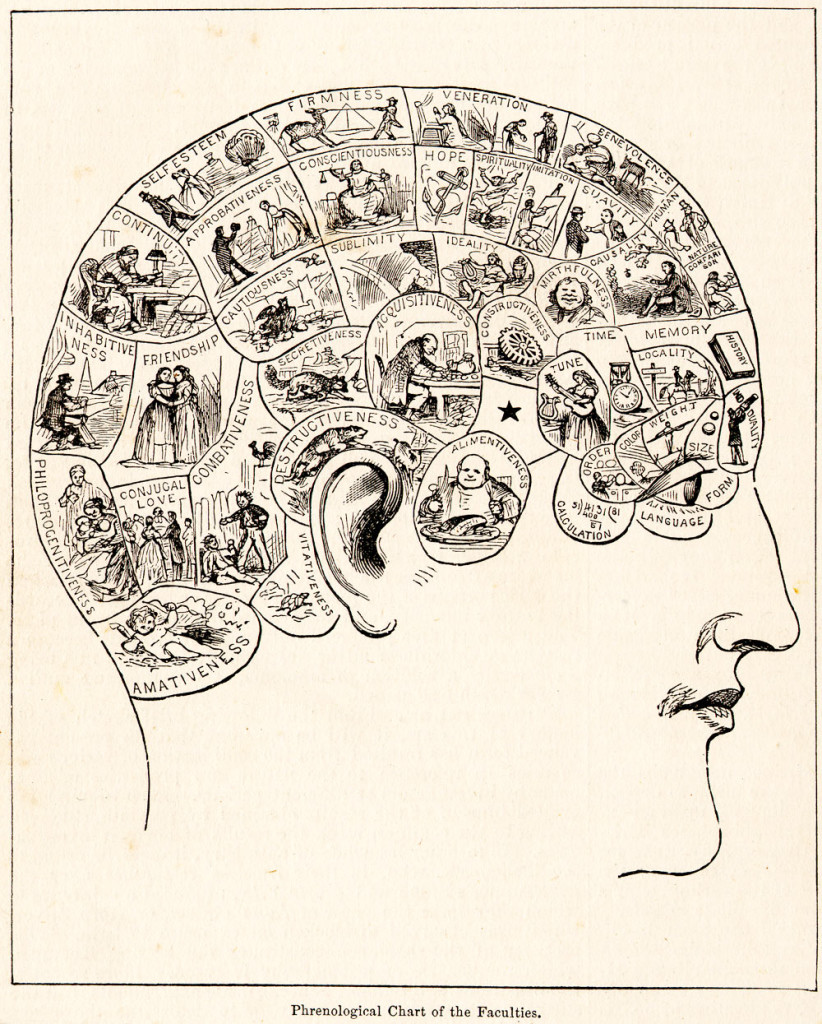 Hi, Stockton Faculty and Students!
Hi, Stockton Faculty and Students!
Thank you for a wonderful event on Monday. On this page, you will find additional information on the Victorian period, pseudosciences, ether, John Davidson’s “Fleet Street,” steampunk, and suggestions for further inquiry. Please feel free to drop me a line if you want to discuss any of these ideas or anything from our discussion further.
The PowerPoint Presentation
The Victorian Period
One of your classmates asked me for a few reading recommendations on the Victorian period in general, and so I’ve added them below in case others would like to know more as well.
Books
The first and last books below are available for check out at Stockton’s Richard E. Bjork Library.
- Francis O’Gorman’s The Cambridge Companion to Victorian Culture
- Susie L. Steinbach’s Understanding the Victorians: Politics, Culture and Society in Nineteenth-Century Britain
- Herbert F. Tucker’s A Companion to Victorian Literature and Culture
Online Resources
- BRANCH (Britain, Representation, and Nineteenth-Century History, 1775-1925)
- The British Library’s Online Materials on Victorian Popular Culture
- Victoria Research Web (scroll down to the bottom of the page to search)
Victorian Pseudosciences

“PhrenologyPix” by Not credited – From People’s Cyclopedia of Universal Knowledge (1883) Transferred from en.wikipedia Original uploader was Whbonney at en.wikipedia. Licensed under Public Domain via Wikimedia Commons
In my talk, I situated John Davidson’s use of ether in terms of broader scientific discourses that were hotly debated in the nineteenth century and have been almost entirely disproved by this point. In case folks would like further information on these fascinating these “scientific” disciplines, I’ve included the example of phrenology and its influence below:
- Phrenology – the science of telling a person’s character and/or intelligence based on the size, shape, and bumps of a person’s head
- Cesare Lombroso and the Born Criminal – Building on Franz Joseph Gall’s phrenological theories and Charles Darwin’s evolutionary theories, Lombroso argued that criminality is hereditary and visible person’s facial structure. Cesare Lombroso’s Museum of Criminal Anthropology includes many of specimens Lombroso collected and the head of the man himself.
Luminiferous Ether
Ether (also spelled aether) was believed by the Victorians, including such scientific luminaries as James Clerk Maxwell and Sir William Thomson, Lord Kelvin, to be the element through which light traveled and, as such, surrounded and connected all living and non-living objects. By theorizing that ether connected the universe and conducted electromagnetic energy, these nineteenth-century scientists were able understand light’s wave and particle functions (which have been photographed only recently). As a conceptual element, ether works as conductor and a connector, allowing energy to cross vast distances and creating the links between the most unlikely of objects and people.

The luminiferous ether: it was hypothesised that the Earth moves through a “medium” of ether that carries light. “AetherWind” by I, Cronholm144. Licensed under CC BY-SA 3.0 via Wikimedia Commons
Ether remained key component of Victorian physics until the end of the century. In particular, the Michelson-Morley experiment of 1887, which was designed to detect ether’s effect on the speed of light so as to find out whether the earth’s speed relative to the ether could be detected. This results of this experiment provided solid evidence that ether did not exist. And, finally, Einstein’s Theories of Relativity (1905 & 1915) revolutionized physics and rendered any theory involving ether obsolete at best. However, scientist and inventor Nikola Tesla continued to insist on its existence, and this work has given rise to a pseudoscience of occult physics. As examples, take a look at a few of the results on a Google search for “Tesla” and “ether.” On a lighter note, the Oatmeal’s comic on Tesla gives you a sense of his other lines of inquiry.
For an extended discussion of the history of these theories, see Harman, P.M. Energy, Force, and Matter: The Conceptual Development of Nineteenth-Century Physics. Cambridge: Cambridge UP, 1982.
John Davidson (1857-1909)

“John Davidson by Robert Bryden” by Robert Bryden (1865–1939) – Poets of the younger generation 1902 By William Archer 1856 – 1924. Licensed under Public Domain via Wikimedia Commons
Raised in Greenock, Scotland and the son of a Calvinist preacher, John Davidson early rejected what he viewed as the provincial and stultifying dogma of Christianity and turned to poetry as a way of dramatizing that rejection and opening the eyes of others. Refusing to follow in his father’s footsteps and become a minister, he initially pursued chemistry as an applied science while working for the laboratories of the Walker Sugar Company; he then tested food safety as a state-employed assistant to the Public Analyst of Greenock. Davidson later shifted to pupil teaching and briefly attended Edinburgh University before moving to London in 1889 and beginning his literary career. Though he never returned to science as a profession, his interest in the discipline remained strong throughout his lifetime and offered a way of understanding the workings of the world once unmoored from the governing principles of his family’s strict Calvinism.
Our look at Davidson will focus on “Fleet Street” from Fleet Street and Other Poems (1909), Davidson’s final collection of poetry. In this poem, the speaker pauses on this busy thoroughfare and wonders if the street’s bricks envy the grandeur and beauty of Saturn’s rings, an envy he shares. The speaker then reins in his and bricks’ desire for pure aesthetic greatness by arguing for the importance of utility over beauty. The poem ends with Davidson asserting the greatness of the bricks’ role in Fleet Street’s information gathering and disseminating enterprise. However, throughout the poem, John Davidson’s vision of ether connects all matter at its most basic molecular level and blurs the boundaries between the aesthetic and useful.
While we only had time to discuss as few key stanzas from the poem in our face-to-face discussion, I have included the complete poem below.
The except above comes from the William Andrews Clark Memorial Library’s copy of the book, which is available for download via the Internet Archive: https://archive.org/details/fleetstreetother00davi
Steampunk Literature and Culture

“Telectroscope aperture at London City Hall showing Tower Bridge and Canary Wharf” by Original uploader was Colonel Warden at en.wikipedia – Transferred from en.wikipedia; transferred to Commons by User:Undead_warrior using CommonsHelper.. Licensed under CC BY-SA 3.0 via Wikimedia Commons
First named by K. W. Jeter in 1987, steampunk, a subgenre of science fiction and fantasy in which alternate histories of the nineteenth century dramatically reshape the past, present, and future, has become increasingly popular in mainstream culture as both a literary genre and a fan subculture, to the point that one can now purchase mass-produced steampunk costumes from most American party shops.
As an alternate history genre, steampunk literature builds its worlds by answering the “what if?” question of science fiction and fantasy; it does so by tweaking nineteenth-century history and literature and engaging with cultural discourses of the day.
Here are a few invited blog posts that I have written the subject:
- Queer Cogs: Steampunk, Gender Identity, and Sexuality (Tor.com)
- Steampunk and the Academy; or it really is a clockwork universe, my dear Victorianists (The Journal of Victorian Culture Online)
- Roundtable on Paul St George’s Telectroscope (The Journal of Victorian Culture Online)
If you are interested in reading some steampunk literature or learning more about steampunk in general, the suggestions below will give you a good sense of steampunk from a variety of voices. The reading list from my Fall 2014 International Steampunk Literature and Culture class may also be of interest to you.
Blogs and Online Periodicals
- Airship Ambassador: http://www.airshipambassador.com/
- Beyond Victoriana: A Multicultural Perspective on Steampunk: http://beyondvictoriana.com/
- Journal of Neo-Victorian Studies: http://www.neovictorianstudies.com/
- Silver Goggles: http://silver-goggles.blogspot.com/
- Steampunk Chronicle: http://www.steampunkchronicle.com/
- Steampunk Magazine: http://www.steampunkmagazine.com/
- Steampunk Scholar: http://steampunkscholar.blogspot.com/
- Steampunk Week 2011 at Tor.com: http://www.tor.com/features/series/steampunk-week
Online Short Films
- “Steamfunk & Rococoa: A Black Victorian Fantasy” by Briaan L. Baron:
- “Eye of the Storm” by Lovett:
Steampunk Music
- “The Circus At The End Of The World” by Abney Park: https://www.youtube.com/watch?v=lTSxJcH7h7c&list=RDlTSxJcH7h7c
- “Chap-Hop History” by Mr. B The Gentleman Rhymer: https://www.youtube.com/watch?v=6t28COxEp2k&list=RD6t28COxEp2k#t=1
- “Fighting Trousers” by Professor Elemental: https://www.youtube.com/watch?v=0iRTB-FTMdk&list=RD0iRTB-FTMdk#t=9
- “Just Glue Some Gears On It (And Call It Steampunk)” by Reginald Pikedevant: https://www.youtube.com/watch?v=TFCuE5rHbPA
- The Vagabond” by The Gin Rebellion: https://www.youtube.com/watch?v=ImdvgJ-epS0
Anthologies
- Donovan, Art. The Art of Steampunk: Extraordinary Devices and Ingenious Contraptions from the Leading Artists of the Steampunk Movement. Fox Chapel Publishing, 2011.
- Hans, Sarah. Steampunk World. Alliteration Ink, 2014.
- Vanderhooft, JoSelle. Steam-Powered: Lesbian Steampunk Stories. Torquere Press, 2011.
- VanderMeer, Ann and Jeff, Eds. Steampunk. Tachyon Press, 2008. (and subsequent volumes of this anthology)
- VanderMeer, Jeff and S. J. Chambers. The Steampunk Bible: An Illustrated Guide to the World of Imaginary Airships, Corsets and Goggles, Mad Scientists, and Strange Literature. Abrams Image, 2011.
Novels
- Carriger, Gail. Soulless. (first book of the Parasol Protectorate series)
- Cooper, Karina. Tarnished. Avon, 2012. (first book of the St. Croix Chronicles series
- Bruchac, Joseph. Killer of Enemies. Tu Books, 2013.
- Gibson, William and Bruce Sterling. The Difference Engine. 1990.
- Priest, Cherie. Boneshaker. Tor Books, 2009. (first book of the Clockwork Century series)
- Westerfield, Scott. Leviathan. Simon Pulse, 2009. (first book of the Leviathan trilogy)
